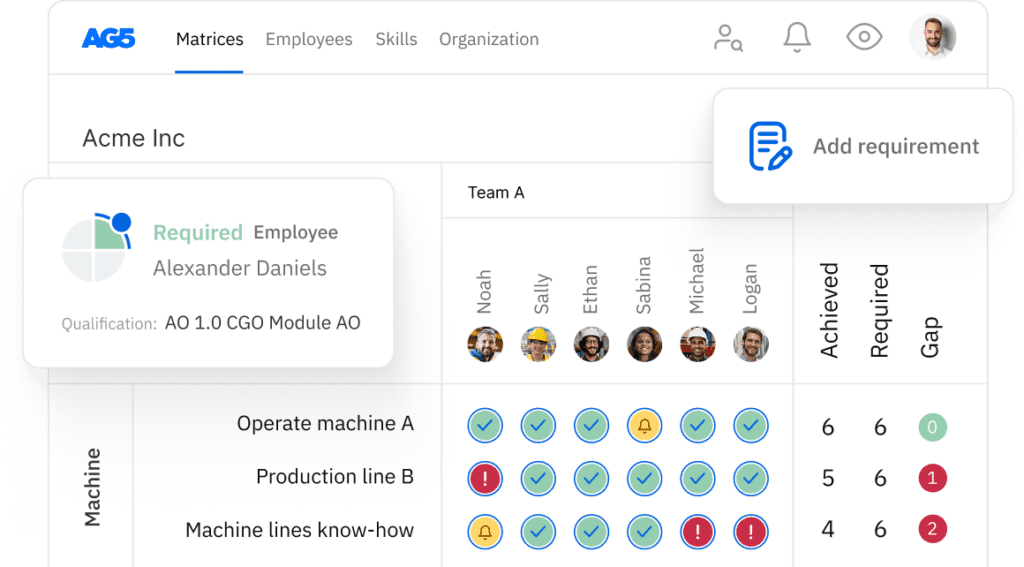How do you evaluate your employees’ knowledge, skills, and abilities? KSA explained
How do you evaluate and measure knowledge, skills and abilities? What challenges will you face in doing so? What tools are available to help? In this article, we’ll answer these questions and more.

Employees’ professional profiles primarily consist of the sum total of their knowledge, skills, and abilities. This is often abbreviated to “KSA.” So how do you evaluate and measure knowledge, skills and abilities? What challenges will you face in doing so? What tools are available to help? In this article, we’ll answer these questions and more.
KSA explainedCopied
KSA stands for knowledge, skills, and abilities [1]. Together, they form the majority of an employee’s professional profile.
Knowledge
Knowledge is primarily theoretical in nature [2]. If you’re knowledgeable about a certain subject, then you’ve acquired a lot of facts and mastered the concepts and theories underlying the topic in question. We usually gain knowledge through education (classroom or online), books, and other similar sources.
Skills
A skill is the ability to perform a certain task or role competently, and relates to the application of knowledge in a particular situation or context. Skills are usually more practical than knowledge, and are often acquired through training and work experience.
Abilities
Abilities (or competencies) are similar to skills. However, an ability is broader – a combination of knowledge, skills, attitudes, and talent.
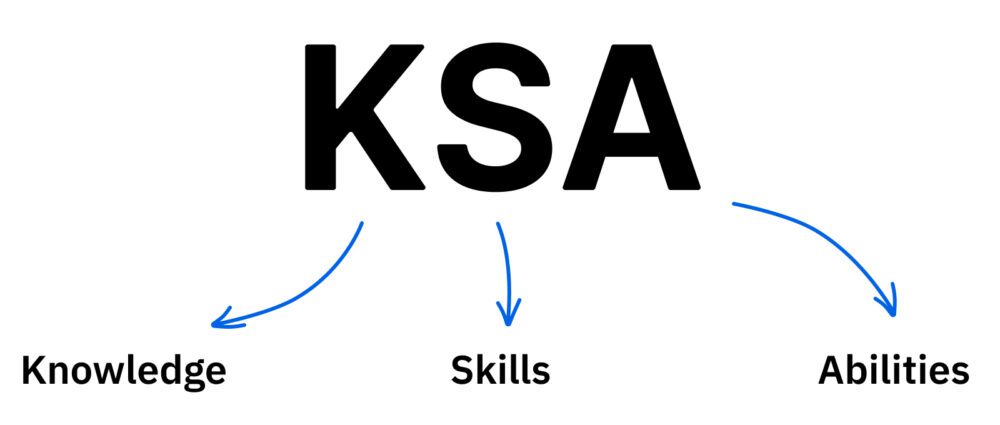
The role of KSA in career developmentCopied
The sum total of knowledge, skills, and abilities define a role or job [3]. Does a candidate or employee have the right KSA combination for a specific opening? Using the KSA model, you can see quickly and clearly if the right person is in the right role or job.
The US Federal Government regularly uses the KSA concept to recruit suitable staff, using a scale from 0 to 100. A score of 70 is generally a minimum requirement to be eligible for a job opening or role.
The KSA model is also used to map and analyze the success of and necessity training within organizations. This means KSA is a useful tool for identifying potential skills gaps and finding concrete solutions to closing them.
How to measure knowledge, skills, and abilities with performance metrics and KPIsCopied
With the right tools and methods, it is relatively simple to measure KSA. Here, we’ll take a look at each component of KSA, as well as offer examples of metrics and KPIs you can use to track them.
Evaluating knowledge
You can evaluate an employee’s level of knowledge in several ways. Here are a few of the most common:
- Certifications. Serving as “proof” of competence, certifications show that someone has mastered both the theoretical and practical basics – which have often been standardized by a certification body – required for a certain role, task, or job.
- Qualifications. Demonstrate acquired knowledge in a subject or area. For example, a master’s degree or technical school diploma.
- Tests and exams. Regular assessments are a great way to measure theoretical knowledge. They can also help you evaluate how well employees retain and apply learned information over time.
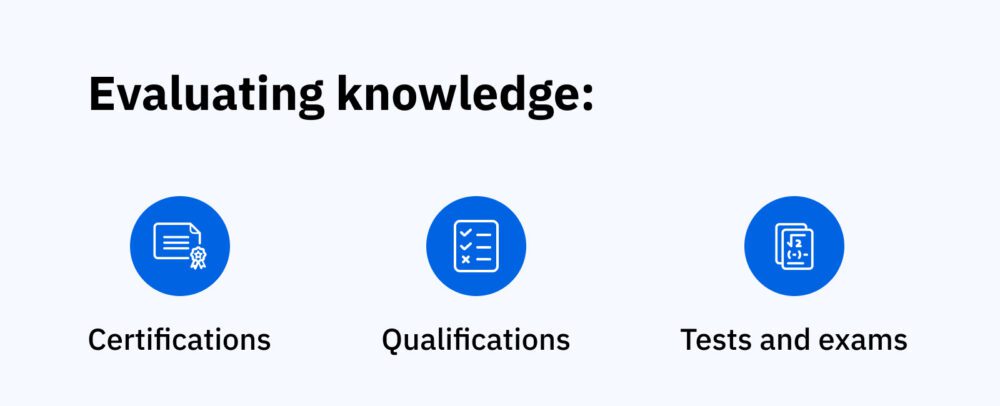
Evaluating skills
Skills are more ‘practical’ in nature than knowledge and are evaluated differently than knowledge.
- Work quality. The accuracy and effectiveness of produced work provides a good indication of an employee’s skill levels. By assessing work quality over an extended period, you also avoid evaluating an employee based solely on a one-off snapshot. This is a common problem associated with traditional evaluation systems such as performance reviews.
- Practical skill assessments. You can assess skill levels through on-the-job practical test, which demonstrate how an individual applies their knowledge and experience to solve real-life problems and challenges.
- Skills matrices. A skills matrix offers an overview of all your employees’ skills and qualifications. A well-built skills matrix allows you to determine knowledge levels, proficiency levels, and certification statues at a single glance.
Want to learn more about skills matrices? Check out our blog: What is a skills matrix – which dives into the topic, shedding light on their benefits and offering tips for creating one of your own.
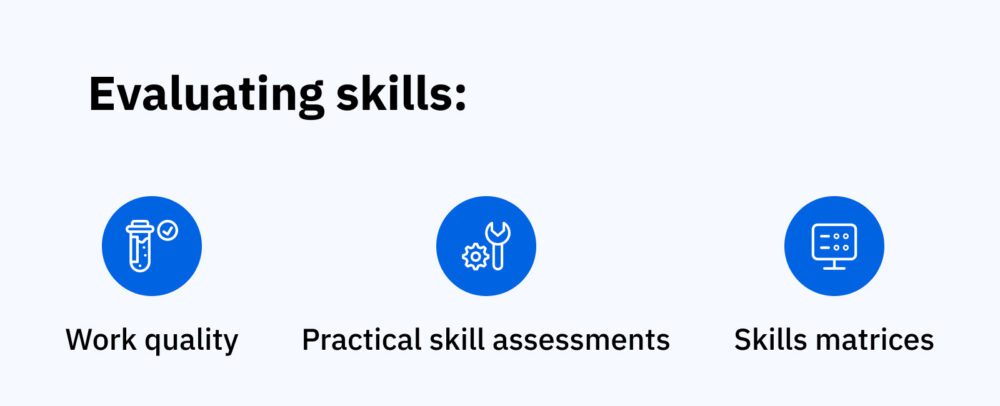
Evaluating abilities
Abilities require a combination of knowledge and skills, but they also involve natural talent. You can evaluate abilities in one of several ways.
- Problem-solving performance. Scenario-based assessments and critical thinking evaluations can provide quantifiable results that gauge employees’ ability to analyze, identify root causes, and propose effective solutions.
- Creativity assessments. Employees with the ability to creatively think and come up with innovative ideas is valuable in essentially every professional environment. Real-world assessments can help you measure capacity to think outside the box, propose novel solutions, and contribute to creative projects.
- Adaptability. Change management and learning agility – as well the ability to navigate adverse situations – are valuable in many leadership positions. By evaluating employees’ adaptability, be it through day-to-day operations or assessments, you can easily identify employees with such abilities.
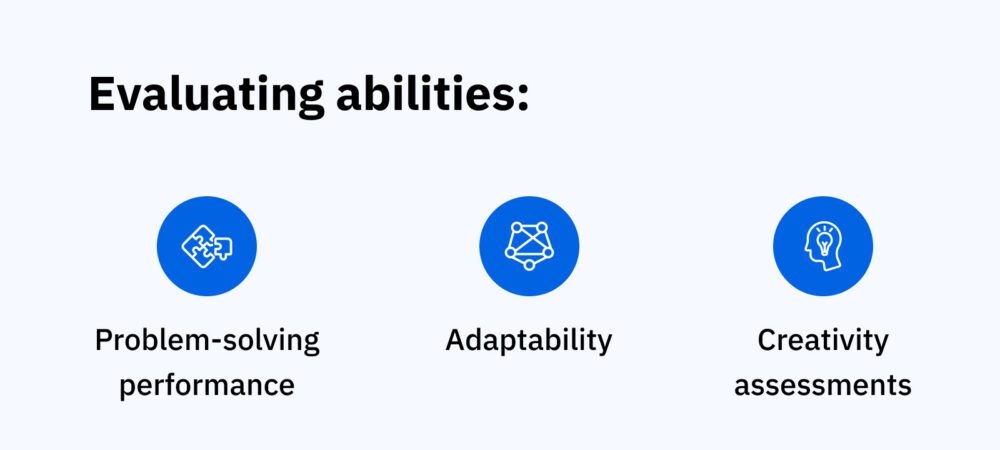
Challenges in measuring and evaluating KSACopied
Even with the right metrics and KPIs, measuring and evaluating employees’ KSA can still be tricky. Below are some of the most common challenges that organizations face in doing so, as well as tips on navigating them:
- Subjectivity and bias. Evaluations can often be influenced by the personal biases of team leaders or managers, leading to subjective judgments. Additionally, different assessors may interpret and score KSA differently, impacting the reliability and validity of assessments. This is why it is important to have a standardized method of scoring KSA in your organization.
- Skill complexity. Some skills are complex and multifaceted, making them difficult to measure accurately. For example, interpersonal skills involve a range of abilities, such as communication, empathy, and conflict resolution. You’ll need a way to group and categorize knowledge, abilities, skills, so you can easily see how they relate to one another.
- Technology advancements. As technological advancements occur – be it through the introduction of new machines on factory floors, new software, or even entirely new manufacturing methods – measuring KSA becomes increasingly difficult. Effectively doing so requires real-time tracking of employee skills, as well as a way to identify and close skills gaps.
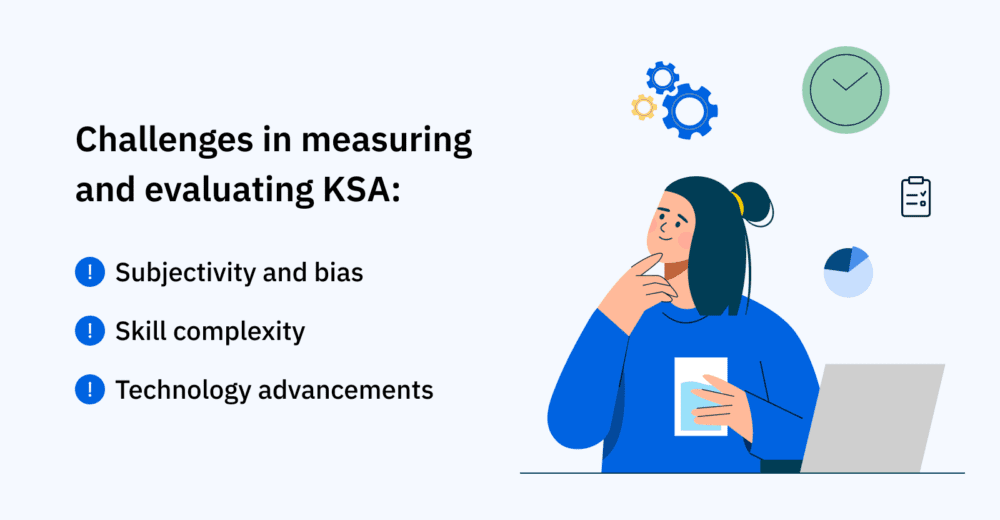
Measuring and evaluating KSA with AG5 skills management softwareCopied
You can more easily navigate challenges involved in evaluation and measuring knowledge, skills and abilities with skills management software. The right software will help you structure your teams and departments in such a way that will allow you fully leverage your employees’ knowledge, skills, and abilities.
With AG5, you can:
- Get full oversight of your employees’ skills, certifications, and qualifications in real-time – and in an organizationally standardized manner
- Easily track KSA – then use that information to identify and close skills gaps
- Link projects to specific knowledge, skills, and abilities
- Set notifications for employees, groups, or qualifications
- Find the best replacements for employees off sick
- Search for the most qualified employee to retool a production line
- Replicate organizational structures and link employees to qualifications using drag-and-drop menus
- And much more
Ready to get started using AG5 to measure and track your employees’ KSA? Schedule a free, live, 15-minute demo to see exactly how our skills management software can help your organization.
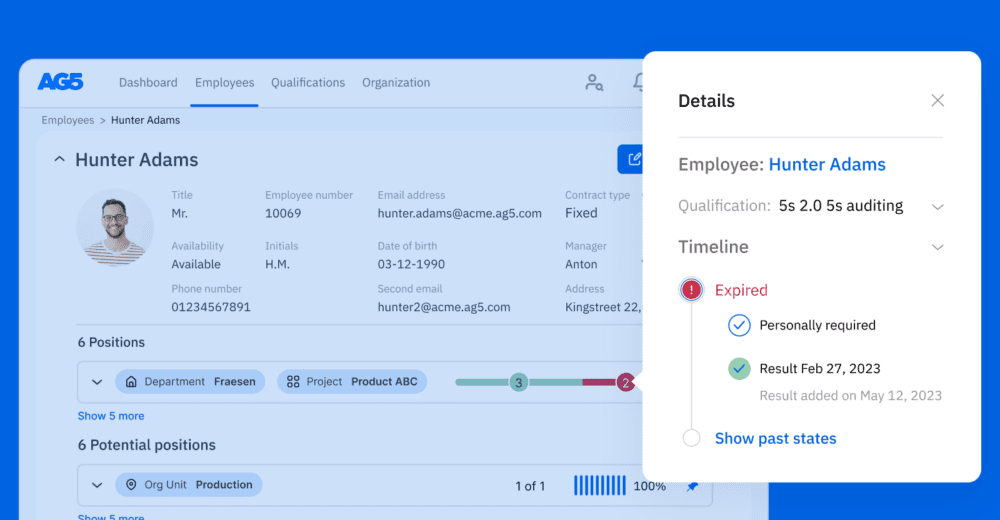
Resources Copied
Sources Copied
- Change view: Table
-
APA
| # | Source title | Description | Publication | Retrieved | Source URL |
|---|---|---|---|---|---|
| 1 | Knowledge, Skills and Abilities (KSA): Definitions and Examples. | Indeed | - | April 16, 2024 | https://www.indeed.com/career-.. |
| 2 | Knowledge, Skills and Abilities: Everything you need to know | The Human Capital Hub | - | April 16, 2024 | https://www.thehumancapitalhub.. |
| 3 | 23 KSA (Knowledge, Skills & Abilities) Examples + How To Use KSAs. | AIHR | - | April 12, 2024 | https://www.aihr.com/blog/know.. |
Author Copied
Revisions Copied
Article sources checked. Content was updated and new visuals were added.
Written by: Rick van Echtelt
Copy edited by: Adam Kohut

